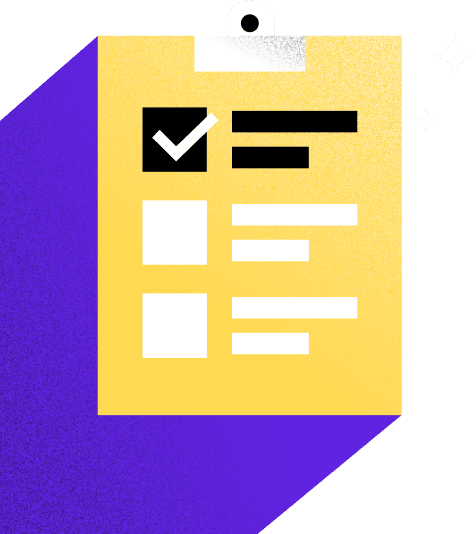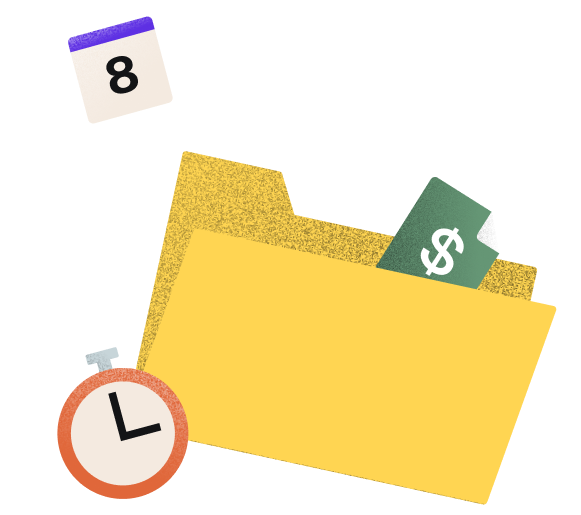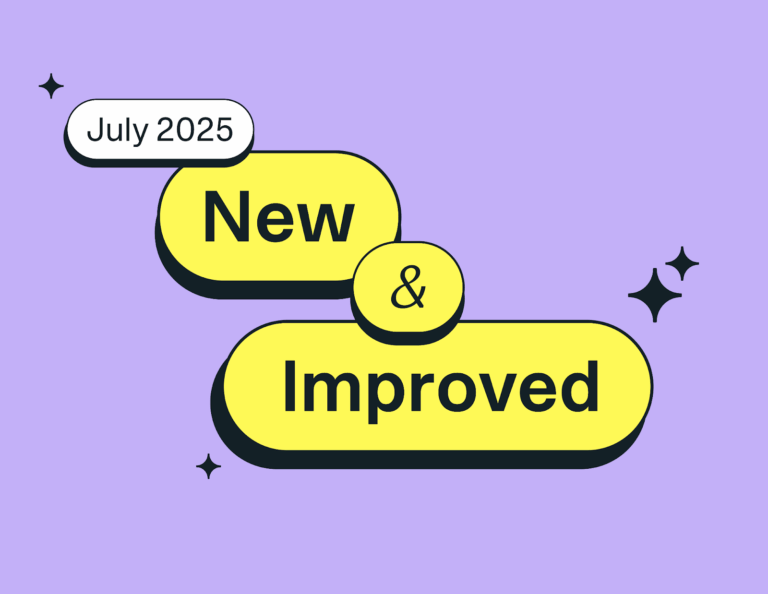Filing your taxes as an independent business owner doesn’t have to be a struggle. Use our DIY tax filing checklist to stay organized during tax season.

Managing taxes as an independent business owner doesn’t have to be daunting. Whether you’re sorting through receipts, selecting the right tax forms, or maximizing your deductions—tax season, with the right amount of preparation, can be a smooth and manageable process.
If you’re a single-owner LLC or sole proprietor, doing your own self-employment taxes can actually be the best option for a seamless tax season. You don’t have to worry about a corporate tax return or any W-2s for employees—making the entire process incredibly straightforward (assuming that any assistants or freelancers that you hire are paid as independent contractors).
Not only will you save a couple of bucks on an accountant, but doing your own bookkeeping and filing your own taxes helps you gain more control over your business. A plus, it also gives you a much better understanding of how business income taxes work and how your business is doing on a micro and macro level.
Unsure of where to get started? We’ve got you covered. In this blog post we’ll give you a step-by-step overview of filing your taxes, tax forms you’ll need, and different ways to file your taxes. Even better, we’ve included a checklist so you can be sure that nothing gets missed as you prep for taxes this year.
Now, let’s dive in.
Get ahead of tax season
Use our free self-employment tax calculator to estimate your tax rate.
Jump to:
- Why business structure matters for taxes
- Step-by-step tax filing overview
- Gathering tax forms and important numbers
- Filing taxes online, by mail, or through a tax preparer
- FAQs on DIY taxes for business owners
Pro tip
With your HoneyBook account connected to your Quickbooks, you can push your payments into your accounting software so all of your reports are up-to-date in real time.
Why business structure matters for taxes
Your business structure significantly affects how you file taxes and how much you pay. As an independent business owner, you likely operate as either a sole proprietorship or single-member LLC.
A sole proprietorship requires no formal paperwork or registration, making it the default choice for many independent businesses. However, this structure means your business income is taxed as personal income. Your tax rate depends on your total household income bracket, which could result in higher taxes even with modest business earnings.
A single-member LLC offers distinct advantages. It creates a legal separation between your personal and business finances, protecting your personal assets. Your business income is taxed at corporate rates rather than personal tax brackets. Both structures allow you to claim the same deductions for business expenses like travel, equipment, and meals.
Step-by-step tax filing overview
Filing taxes as an independent business owner doesn’t have to be overwhelming. With a clear plan and the right tools, you can navigate the process seamlessly. This overview will walk you through tax filing step by step, breaking down everything you need to do to tackle this tax season with confidence.
Step 1: Confirm your filing requirement
Most independent business owners will need to file taxes, especially if they earned $400 or more in self-employment income, which is subject to self-employment tax, including Social Security and Medicare contributions. If you also have W-2 income from an employer, you’ll need to report both sources on your tax return.
Step 2: Gather all necessary tax documents
Before filing, collect all required tax forms and financial records. Using the HoneyBook Tax Filing Checklist (below) and Tax Hub to ensure you don’t miss anything. Key documents include:
- Income documents: 1099-NECs for freelance work, 1099-Ks for third-party payments, or W-2s (if applicable).
- Expense records: Business-related deductions, receipts, and estimated tax payments.
Keeping everything in one place will streamline the filing process.
Step 3: Mark important tax deadlines
Tax Day typically falls on April 15, unless it lands on a weekend or holiday. If you’re self-employed, quarterly estimated tax payments are also due throughout the year. Staying ahead of these deadlines helps avoid penalties.
Step 4: Choose how to file your taxes
Decide which tax filing method works best for you:
- IRS Free File (if you qualify based on income)
- Tax software (like TurboTax or TaxAct)
- A professional tax preparer (such as a CPA or tax attorney)
Step 5: File your tax return electronically or by mail
Once everything is ready, you can submit your federal income tax return and, if required, your state tax return:
- E-filing is faster and reduces errors.
- Paper filing is an option but takes longer to process.
Step 6: Pay any taxes owed or receive your refund
After filing, you’ll either owe taxes or be eligible for a refund. If you qualify for an income tax credit, it may help lower your total tax bill or increase your refund.
- If you owe taxes: Pay online via the IRS website, by check, or through direct bank transfer.
- If you expect a refund: Direct deposit is the fastest way to receive your check.
Step 7: Keep your tax records organized
Save copies of your return, receipts, and all supporting documents for at least seven years in case of an audit or future reference. Digital storage on your computer or mobile device is a great way to keep things organized.
Pro tip
Remember to start tracking expenses at the beginning of the year. The most common categories your business expenses will fall under cost of goods sold, marketing and advertising, dues and subscriptions, and salaries and wages. Learn more about tracking expenses.
Gathering tax forms and important numbers
As we mentioned above, before you can file your taxes, you’ll need to get organized with all the tax forms and numbers that you’ll need. As soon as you can start (preparing for the tax year prior), use the following checklist and the HoneyBook Tax Hub to gather your documents and financial reports. Depending on your business structure and work, you may not need all these documents and forms, but it’s a good rule of thumb to have the full list on hand. Here’s a rundown of what you should be looking for.

Check out the checklist so you can refer to it as you prepare for this tax season.
Business tax forms and numbers
☐ Your personal Social Security Number (SSN) and business EIN. If you’re a sole proprietor, you may only have an SSN, which is used for tax reporting, instead of a separate business tax ID
☐ All 1099-NECs you’ve received. These will come from any non-salary/non-employee freelance work you did that exceeded $600. The employers will ask for your EIN/SSN and mailing address.
- You’ll be receiving these throughout the month of January—collect them in a folder until you’re ready to file your taxes. If they don’t send you one, that’s their mistake, not yours! Reach out to the payer first to remind them to send you a 1099. If you still don’t receive a 1099 by February, call the IRS.
☐ General income. This refers to all other income that you did not report in the 1099-NEC section.
☐ Transportation Expenses:
- Total miles driven in the tax year—both business and personal
- Miles driven for business (you can use an app like QuickBooks)
- Tolls paid during business driving
- Public transportation expenses (train tickets, subway, etc.)
- Parking fees (parking meters, parking garages, etc.)
Pro tip
I recommend not tracking gas and vehicle expenses and instead taking the IRS’s standard mileage rate. The IRS’s standard mileage rate changes annually and occasionally midyear.
☐ All 1099-NEC forms that you’ve issued. These are for any non-salary/non-employee freelancers who you paid at least $600 during the year.
If you haven’t sent these yet, you’ll need to know their full company name (if applicable), EIN or SSN, and mailing address. You can collect all of this by sending them a W9 to fill out when you hire them. You’ll need to fill out a 1099-NEC form for each worker and mail a copy to the IRS and the recipient by January 31st. Programs like Quickbooks often create these for you.
☐ Any form 1099-MISC that you’ve issued. These are for miscellaneous payments over $6,000 for non-employees, such as attorneys frees, or any awards or prizes you may have issued as part of your work.
☐ The cost of any (non-medical) insurance for your business. This includes liability insurance, equipment insurance, etc.
☐ Advertising expenses. These include digital ads on Facebook and Instagram, brochures, business cards, web hosting/blog expenses, logo design, etc.
☐ Office deductions such as equipment expenses, stamps, flash drives, software subscriptions, etc.
☐ Supplies such as boxes, packaging, printer paper, ink, pens, post-its, planner, etc.
☐ Other expenses. These could include PayPal/bank/ATM fees, courses, workshops, client gifts, etc.
☐ Home office expenses. You can only deduct these if you use part of your home solely for business, such as an office, desk, or studio. Common areas like your kitchen, bathroom, hallways, etc., do not count.
- Square footage of the whole home
- Square footage of the business-only area of the home
- Percentage of time you conduct business inside vs. out of the home
- Expenses relevant to the whole home—mortgage interest, property taxes, condo insurance, utilities, etc.
☐ If you have a SEP IRA set up for your business, it’ll let you know the maximum amount you can contribute to the account. The more you contribute, the more your taxes will go down (by roughly 15%).
Personal tax forms and numbers
☐ Any 1099-INTs you’ve received—these come from banks, brokerages, etc.
☐ Any 1099-DIVs you’ve received—these come from investments, retirement accounts, etc.
Banks may mail or email these to you, or post them on your account under “Documents”, Tax Documents”, “E-Documents”, etc.
☐ Any additional (personal, not under your business) 1099-NECs you’ve received for miscellaneous freelance/subcontractor work. These will be associated with your personal SSN, not your business EIN.
☐ 1099-K, if you’ve received one for third-party network transactions.
☐ 1099-G, if you’ve received unemployment or local income tax refunds, etc.
☐ Property tax information. If you entered this info under the “Home office” section, it’ll carry over the info and give you the proper deduction for the non-business portion of your home.
☐ Any charitable donations. You’ll need the name of the 501(c)(3) organization, the dollar value of the donation, and a donation receipt.
☐ Any 1098-E or 1098-Ts. If you’ve paid any money towards tuition, student loans, etc.
☐ Any medical expenses
☐ Estimated taxes. Each quarter, you’ll file a Form 1040-ES and submit your estimated taxes. To do this, just take last year’s federal tax due and divide by 4, then pay these equal amounts by the quarterly due dates throughout the year. You can file online at sites like pay1040.com, etc. If you are concerned about this process, be sure to speak with an accounting professional.
Enter the quantities you paid and the dates submitted. Don’t include any online credit card fees you might have paid for filing/submitting.
☐ Retirement/Investments such as a Roth IRA. If you’re financially able to, you should consider contributing the maximum—it isn’t taxed when you take out the funds when you retire!
☐ Any moving expenses, accountant fees (or the price of the TurboTax software), etc.
Filing taxes online, by mail, or through a tax preparer
Using tools like HoneyBook will help you keep thorough records of your self-employment income and expenses to make your DIY taxes easier. With your records, you can then file your federal return using one of three methods: online, by mail, or with a tax preparer:
Filing taxes online
Electronic filing is one of the easiest ways to do your taxes. There are a variety of tax software programs available, though it’s important to pay attention to software costs.
- IRS fillable forms for any income level
- IRS Free File’s guided tax software if your adjusted gross income is $79,000 or less
- Tax software such as TurboTax Business Online or TaxAct for small businesses
Filing by mail
Filing by mail entails printing out your forms, such as Form 1040; all of the relevant schedules, such as Schedule C (Profits From a Business) and Form 8829 (Business Use of Your Home); and any other required forms. Look at the form instructions for the IRS mailing address and mail all of your forms by the deadline.
Filing with a tax preparer
You may want to have a professional tax preparer handle your taxes, especially if you have any complex tax situations. By working with tax experts, you can take much of the guesswork out of your taxes, maximize your tax deductions, and reduce the risk of errors. Be sure to compare tax preparation fees, as costs can vary depending on your tax situation. Plus, these professionals are trained to avoid entry errors, why it can be easy to have human error get in the way if you’re doing your own taxes.
However, when working with them, it’s still important to make sure you’re providing them with all of your accurate income, asset, and expense information. Your choices include:
- Enrolled agents who have credentials with the IRS
- Certified Public Accountants (CPAs)
- Tax attorneys
- Tax preparation tools like H&R Block
FAQs on DIY taxes for business owners
When do I need to file my taxes in 2025?
The deadline for filing and paying taxes in 2025 is Tuesday, April 15.
Can you do taxes by yourself?
Yes, you can absolutely do your own taxes as an independent business owner. With the right tools and preparation, DIY tax filing can be a straightforward process. Tax software can help ensure accuracy and claim all eligible deductions for the maximum refund. The key is to stay organized, track your income and expenses throughout the year, and use resources like the HoneyBook Tax Filing Checklist and Tax Hub to ensure you have everything you need. If your taxes become too complex, you can always consult a tax professional for additional support.
Can I file my taxes for free?
You can file your taxes for free at IRS.gov as long as you meet the eligibility requirements, including the limits on your taxable income. If using an IRS tax preparation partner, you may be charged for filing a state tax return.
Should I use the standard deduction or itemized deductions?
The IRS lets you deduct eligible expenses to lower your taxable income, thus lowering your tax liability. You can itemize these business deductions, which include expenses such as mortgage interest, state taxes, and charitable contributions, to name a few. If you don’t itemize deductions, you can take the standard deduction. Additionally, some independent business owners may qualify for an income tax credit, which can further reduce the amount of tax owed.
Choose the method that will result in your maximum tax savings. If you add your itemized deductions and the total is less than the standard deduction, then use the standard deduction. Itemizing your deductions could lead to larger tax savings, however, if your total is larger than the standard deduction.
Is it worth it to file my own taxes?
Filing your own taxes can save money and give you better control over your finances, especially with tax software or IRS Free File. If your tax situation is simple and well-organized, DIY tax filing is a great option. However, for complex returns or maximizing deductions, hiring a tax professional may be worth considering.
When can I expect my federal tax return?
A federal tax return is the form you file with the IRS. It’s your responsibility to obtain this return and file it, along with any tax payments you owe. If you’re expecting a federal tax refund, you can use the agency’s Where’s My Refund? tool to check its status.
Take control of your business taxes
Filing your own taxes as an independent business owner is more than just a cost-saving measure—it’s an opportunity to gain deeper insight into your business finances. While the process may seem daunting at first, staying organized throughout the year and following the steps outlined in this guide can make tax season manageable and even empowering.
Remember, whether you choose to file online, by mail, or with professional help, the key is maintaining thorough records and understanding your business’s tax obligations. Our checklist and Tax Hub can help you ensure that you have all necessary documents ready. And if your situation is a bit more complex, don’t hesitate to consult a tax professional to help out.
By taking charge of your tax preparation, you’re not just fulfilling a business obligation—you’re developing valuable financial literacy skills that will serve you well as your business grows. Start preparing early, stay organized, and you’ll be sure to approach tax season with confidence.
Disclaimer: The advice featured in this blog post was sourced from our community members for sharing general information and knowledge. For specific financial and legal advice, please consult an authorized professional.




